
Overview
The utilities industry by measuring wind speed, aiding in the optimization of energy production, and ensuring safety. In wind farms, anemometers are utilized to gauge wind velocities, enabling efficient placement of turbines for maximum power generation. Additionally, in the transmission and distribution of electricity, anemometers help anticipate potential issues such as line icing or structural stress due to high winds, thereby enhancing grid reliability. Furthermore, anemometers contribute to the safety of utility workers by providing real-time data on wind conditions during maintenance and repair operations. In the context of environmental monitoring, anemometers assist in assessing atmospheric conditions for pollution dispersion modeling and understanding the impact of wind on air quality. Overall, anemometers serve as indispensable tools in the utilities industry, facilitating both operational efficiency and safety across various sectors.
Depending on specific features and functions, GAO Tek’s anemometers are sometimes referred to as wind meters, wind speed sensors, air flow meters, wind velocity gauges, wind monitors, wind detectors, breeze meters, and gust detectors.
Furthermore, GAO Tek’s anemometers are further grouped into:
benchtop, cup, dust and waterproof, handheld, high-precision, hot-wire, industrial, pressure, rugged wind gauges, thermal, ultrasonic, and weather monitoring.
GAO Tek’s anemometers have the following applications in the utilities industry:
- Energy Production Optimization: GAO Tek’s anemometers to assess wind speed for optimal placement of wind turbines in wind farms, enhancing energy production efficiency.
- Grid Reliability Enhancement: Monitoring wind conditions with GAO’s anemometers to anticipate potential issues like line icing or structural stress, improving the reliability of electricity transmission and distribution networks.
- Worker Safety Assurance: GAO Tek provides real-time wind data during maintenance and repair operations, ensuring the safety of utility workers working on power lines and other infrastructure.
- Environmental Monitoring: Assessing atmospheric conditions with GAO Tek’s anemometers to understand wind patterns and their impact on air quality and pollution dispersion, aiding in environmental compliance and management.
- Forecasting and Planning: GAO’s anemometer data for long-term forecasting and planning in the utilities industry, enabling proactive decision-making for infrastructure development and maintenance schedules.
- Renewable Energy Integration: GAO Tek’s anemometer data into renewable energy systems to optimize the integration of wind power into the grid, contributing to the transition towards sustainable energy sources.
- Load Balancing and Demand Management: GAO’s anemometers anticipate wind-driven demand fluctuations and adjust energy production and distribution accordingly, ensuring stable and efficient operation of utility networks.
- Asset Monitoring and Maintenance: GAO Tek’s anemometers are used for ongoing monitoring of wind-induced stress on utility infrastructure, facilitating timely maintenance and repair to prolong the lifespan of assets and minimize downtime.
- Emergency Response Preparedness: Leveraging GAO’s anemometer data to assess wind-related risks during severe weather events and natural disasters, enabling utilities to develop effective emergency response plans and ensure continuity of service.
- Compliance and Reporting: Using GAO Tek’s anemometer measurements to meet regulatory requirements and report on environmental performance, demonstrating adherence to standards and fostering transparency in utility operations.
More information on anemometers and their applications in other industries can be found on anemometers. This category page lists related products.
Systems in the Utilities Industry utilizing Anemometers
Here are some popular systems in the utilities industry using anemometers:
SCADA Systems (Supervisory Control and Data Acquisition):
- SCADA software integrates anemometer data with other sensor readings to provide real-time monitoring and control of utility infrastructure, enhancing operational efficiency and response to changing wind conditions.
Energy Management Systems (EMS):
- EMS software utilizes anemometer data to optimize energy production from renewable sources like wind turbines, ensuring maximum output while maintaining grid stability and reliability.
Predictive Maintenance Software:
- Predictive maintenance software analyses anemometer readings to predict potential equipment failures caused by wind-induced stress, enabling utilities to schedule maintenance proactively and minimize downtime.
Geographic Information Systems (GIS):
- GIS software incorporates anemometer data into spatial analyses of wind patterns, aiding in the planning and design of utility infrastructure and renewable energy projects in areas with favorable wind conditions.
Environmental Monitoring Platforms:
- Environmental monitoring platforms use anemometer data to assess wind-related factors influencing air quality, pollution dispersion, and environmental compliance, supporting regulatory reporting and mitigation efforts.
Asset Performance Management (APM) Software:
- APM software integrates anemometer data with asset health monitoring to assess the impact of wind conditions on the performance and lifespan of utility infrastructure, facilitating informed maintenance and investment decisions.
Weather Forecasting and Analysis Tools:
- Weather forecasting and analysis tools utilize anemometer readings to improve the accuracy of wind forecasts, enabling utilities to anticipate energy production levels and plan grid operations accordingly.
Remote Monitoring and Control Platforms:
- Remote monitoring and control platforms leverage anemometer data to remotely monitor and adjust the operation of wind turbines and other wind-powered assets, optimizing energy production and minimizing manual intervention.
Compliance Management Systems:
- Compliance management systems use anemometer data to ensure compliance with regulatory requirements related to environmental standards, noise pollution limits, and wildlife protection in utility operations involving wind energy.
Energy Trading and Risk Management (ETRM) Software:
- ETRM software incorporates anemometer data into energy trading strategies by providing insights into wind energy generation patterns and market dynamics, supporting risk assessment and decision-making in energy trading activities.
Complying with Government Regulations
GAO Tek’s anemometers comply or help our customers comply with the U.S. government regulations such as:
- Environmental Protection Agency (EPA) regulations
- Occupational Safety and Health Administration (OSHA) standards
- Federal Aviation Administration (FAA) guidelines
- Department of Energy (DOE) requirements
- National Oceanic and Atmospheric Administration (NOAA) guidelines
- Federal Communications Commission (FCC) regulations
- National Institute for Occupational Safety and Health (NIOSH) guidelines
- National Fire Protection Association (NFPA) standards
- American National Standards Institute (ANSI) regulation
GAO Tek’s anemometers comply or help our clients comply with Canadian regulations such as:
- Canadian Environmental Protection Act (CEPA) regulations
- Natural Resources Canada (NRCan) regulations
- Canadian Nuclear Safety Commission (CNSC) regulations
- Canadian Electrical Code (CE Code) standards
- Canadian Aviation Regulations (CARs)
- Canadian Energy Regulator (CER) requirements
- Canadian Food Inspection Agency (CFIA) regulations
- Transport Canada guidelines
- Canadian Radio-television and Telecommunications Commission (CRTC) standards
- Canadian Standards Association (CSA) requirements
- Health Canada guidelines
Case Studies of Anemometers in the Utilities Industry
Anemometers are sometimes called wind meters, wind speed sensors, air flow meters, wind velocity gauges, wind monitors, wind detectors, breeze meters, and gust detectors.
Here are some practical examples of using anemometers in the utilities industry:
Anemometers are crucial for optimizing the placement of wind turbines in the Northeast of New York, where varying terrain and coastal environments influence wind patterns. By accurately measuring wind speeds and directions, utilities can strategically position turbines to maximize energy production.
Anemometers play a vital role in assessing wind resources for offshore wind farms along the northeast region of Washington. They help developers understand wind patterns over the ocean, ensuring the design and operation of offshore turbines are optimized for maximum energy capture.
Anemometers are utilized to assess wind resources and determine optimal turbine placement in the flat landscapes of the Midwest region. By measuring wind speeds at different heights, utilities can identify locations with consistent and strong winds for efficient energy production.
In the Midwest region, anemometers play a crucial role in assessing wind resources for wind energy projects in agricultural areas of the Midwest. Farmers and utilities use this data to evaluate the suitability of their land for wind turbine installations and diversify income through renewable energy production.
Anemometers are deployed along the Southern region in Florida, to assess wind energy potential in coastal areas. This data is crucial for evaluating the feasibility of offshore wind projects and maximizing energy production from coastal wind resources.
In the Southern region, anemometers are used offshore in the Southeast to monitor wind speeds and directions for offshore wind energy projects. This data helps developers assess the suitability of offshore sites, design efficient turbine layouts, and optimize energy production in the region.
Anemometers are deployed in the Canadian prairies to assess wind resources for wind power generation. This data is crucial for identifying suitable locations for wind farms and optimizing energy production in the region’s vast open spaces.
In Canada, anemometers are used in the Arctic regions of Canada to assess wind resources for potential wind energy projects. This data helps developers evaluate the feasibility of wind power generation in remote and cold environments and reduce reliance on diesel generators.
GAO RFID Inc. https://gaorfid.com, a sister company of GAO Tek Inc., is ranked as the top 10 RFID suppliers in the world. Its RFID, BLE, and IoT products have also been widely used in the utilities industry. Articles about related industries are given below:
Use of Anemometers with Leading Software and Cloud Services in the Utilities Industry
GAO Tek has used or has facilitated its customers to use GAO’s anemometers with some of the leading software and cloud services in their applications. Examples of such leading software and cloud services include:
- WS
- Azure
- Google Cloud
- IBM Cloud
- Oracle Cloud
- Salesforce Cloud
- SAP Cloud Platform
- VMware Cloud
- ServiceNow
- Adobe Experience Cloud
- Alibaba Cloud
- Cisco Cloud
- Dell Cloud
- Box
- Dropbox
- NetApp Cloud
- Red Hat OpenShift
- Slack
- Workday Cloud
- Zendesk Sunshine
GAO Tek’s anemometers and their applications in other industries are listed on anemometers. Other related products can be found on this category page environmental.
Meeting Customers’ Demands
Large Choice of Products
In order to satisfy the diversified needs of their corporate customers, GAO Tek Inc. and its sister company GAO RFID Inc. together offer a wide choice of testing and measurement devices, network products, RFID, BLE, IoT, and drones.
Fast Delivery
To shorten the delivery to our customers, GAO has maintained a large stock of its products and can ship overnight within the continental U.S. and Canada from the nearest warehouse.
Local to Our Customers
We are located in both the U.S. and Canada. We travel to customers’ premises if necessary. Hence, we provide very strong local support to our customers in North America, particularly the U.S. and Canada.
Furthermore, we have built partnerships with some integrators, consulting firms, and other service providers in different cities to further strengthen our services. Here are some of the service providers in the utilities industry we have worked with to serve our joint customers:
- Vaisala
- Luft
- Campbell Scientific
- Climatronic
- Ammonite Measurement
- FT Technologies
- Thies Clime
- RM Young
- Gill Instruments
- Met One Instruments
- PCE Instruments
- Delta Ohm
- Kipp & Zonen
- Pulsar Measurement
GAO has Many Customers in the Utilities Industry
The products from both GAO Tek Inc. and GAO RFID Inc. have been widely used in the utility industry by many customers, including some leading companies. Here is more information on applications of GAO RFID Inc.’s products in the utilities industry. Articles about related industries are given below:
Here are some of GAO’s customers in the utilities industry:
- Duke Energy
- NextEra Energy
- Exelon Corporation
- Southern Company
- American Electric Power (AEP)
- Dominion Energy
- Pacific Gas and Electric Company (PG&E)
- Consolidated Edison (Con Edison)
- Xcel Energy
- EDF Energy
- AES Corporation
- FirstEnergy Corporation
- SSE plc
- Hydro One
- Engie
- National Grid
- Hydro-Quebec
- Enel
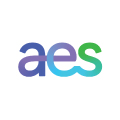
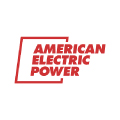
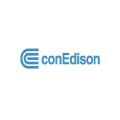
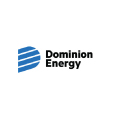
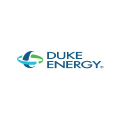

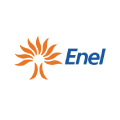
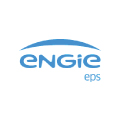
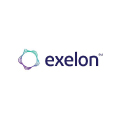
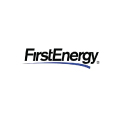
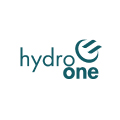
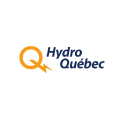
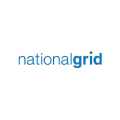

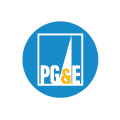

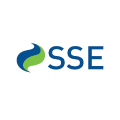
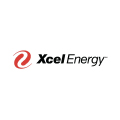
Contact Us
Here are GAO Tek’s anemometers and they are further organized by feature:
benchtop, cup, dust and waterproof, handheld, high-precision, hot-wire, industrial, pressure, rugged wind gauges, thermal, ultrasonic, and weather monitoring.
If you have any questions about our products or want to place an order, our technical experts can help you. Please fill out this form or email us.
